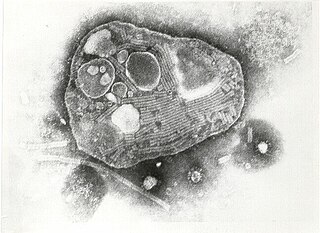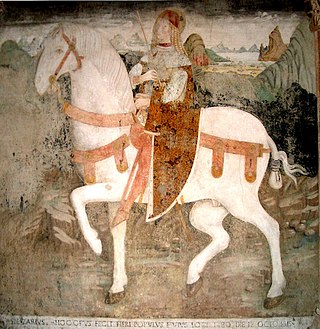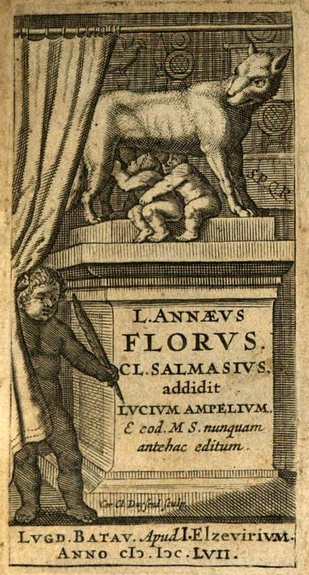Related Research Articles

Paulinus of Nola born Pontius Meropius Anicius Paulinus, was a Roman poet, writer, and senator who attained the ranks of suffect consul and governor of Campania but – following the assassination of the emperor Gratian and under the influence of his Hispanic wife Therasia of Nola — abandoned his career, was baptized as a Christian, and probably after Therasia's death became bishop of Nola in Campania. While there, he wrote poems in honor of his predecessor Saint Felix and corresponded with other Christian leaders throughout the empire. He is credited with the introduction of bells to Christian worship and helped resolve the disputed election of Pope Boniface I.

Sulpicius Severus was a Christian writer and native of Aquitania in modern-day France. He is known for his chronicle of sacred history, as well as his biography of Saint Martin of Tours.

Decimius Magnus Ausonius was a Roman poet and teacher of rhetoric from Burdigala, Aquitaine. For a time, he was tutor to the future Emperor Gratian, who afterwards bestowed the consulship on him. His best-known poems are Mosella, a description of the River Moselle, and Ephemeris, an account of a typical day in his life. His many other verses show his concern for his family, friends, teachers and circle of well-to-do acquaintances and his delight in the technical handling of meter.

Hilary of Poitiers was Bishop of Poitiers and a Doctor of the Church. He was sometimes referred to as the "Hammer of the Arians" and the "Athanasius of the West". His name comes from the Latin word for happy or cheerful. In addition to his important work as bishop, Hilary was married and the father of Abra of Poitiers, a nun and saint who became known for her charity.

The Sapphic stanza, named after Sappho, is an Aeolic verse form of four lines. Originally composed in quantitative verse and unrhymed, since the Middle Ages imitations of the form typically feature rhyme and accentual prosody. It is "the longest lived of the Classical lyric strophes in the West".

Rinderpest was an infectious viral disease of cattle, domestic buffalo, and many other species of even-toed ungulates, including gaurs, buffaloes, large antelope, deer, giraffes, wildebeests, and warthogs. The disease was characterized by fever, oral erosions, diarrhea, lymphoid necrosis, and high mortality. Death rates during outbreaks were usually extremely high, approaching 100% in immunologically naïve populations. Rinderpest was mainly transmitted by direct contact and by drinking contaminated water, although it could also be transmitted by air. After a global eradication campaign starting in the mid-20th century, the last confirmed case of rinderpest was diagnosed in 2001.

Late Latin is the scholarly name for the form of Literary Latin of late antiquity. English dictionary definitions of Late Latin date this period from the 3rd to the 6th centuries CE, and continuing into the 7th century in the Iberian Peninsula. This somewhat ambiguously defined version of Latin was used between the eras of Classical Latin and Medieval Latin. Scholars do not agree exactly when Classical Latin should end or Medieval Latin should begin.

Tiberius Catius Asconius Silius Italicus was a Roman senator, orator and epic poet of the Silver Age of Latin literature. His only surviving work is the 17-book Punica, an epic poem about the Second Punic War and the longest surviving poem in Classical Latin at over 12,000 lines.
Himerius was a Greek sophist and rhetorician. 24 of his orations have reached us complete, and fragments of 12 others survive.
Flavius Merobaudes was a 5th-century Latin rhetorician and poet.
Vigilantius the Christian presbyter, wrote a work, no longer extant, which opposed a number of common 5th-century practices, and which inspired one of the most violent of the polemical treatises of Jerome. Vigilantius was born about 370 at Calagurris in Aquitania, where his father kept an inn on the great Roman road from Gallia Aquitania to Spain. While still a youth his talent became known to Sulpicius Severus, who had estates in that neighborhood, and in 395 Sulpicius, who probably baptized him, sent him with letters to Paulinus of Nola, where he met with a friendly reception. Some Protestant historians regard Vigilantius, along with Jovinian, Aerius of Sebaste and Helvidius, as 4th-5th century early proto-protestants.

The Diocese of Nola is a Latin diocese of the Catholic Church in Italy, suffragan of the Archdiocese of Naples. Its seat is the Campanian city of Nola, now a suburb of Naples. Its cathedral is dedicated to the Assumption. The dedication was originally to S. Stephen, the Protomartyr, but after the second reconstruction the dedication was changed to the Assumption. It is traditionally credited with the introduction of the use of bells into Christian worship.

Nazarius and Celsus (Italian: San Nazaro e San Celso; German: Nazarius were two martyrs of whom little is known beyond the discovery of their bodies by Ambrose of Milan.
Claudianus Ecdidius Mamertus was a Gallo-Roman theologian and the younger brother of Saint Mamertus, Bishop of Vienne.
Marcus Vitorius Marcellus or Vitorius Marcellus was a Roman senator who lived in the 1st century and 2nd century. He was a friend of Quintilian and the poet Statius. Marcellus was suffect consul for the nundinium of September to December 105 with Gaius Caecilius Strabo as his colleague.

Nola is a town and a municipality in the Metropolitan City of Naples, Campania, southern Italy. It lies on the plain between Mount Vesuvius and the Apennines. It is traditionally credited as the diocese that introduced bells to Christian worship.

Three main sets of works are attributed to Florus : Virgilius orator an poeta, an Epitome of Roman History and a collection of 14 short poems. As to whether these were composed by the same person, or set of people, is unclear, but the works are variously attributed to:
Tiberianus was a late Latin writer and poet, surviving only in fragments, who experimented with various metrical schemes.

The Vision of Dorotheus or Dorotheos is an autobiographical Homeric Greek poem, composed in 343 lines of dactylic hexameter and attributed to "Dorotheus, son of Quintus the Poet". The poem chronicles a vision, wherein the author is transported to the Kingdom of Heaven and finds himself in its military hierarchy. He is conscripted into and deserts his post, only to receive punishment, be forgiven, and rediscover his Christian faith. The poem, penned sometime in the 4th-century, depicts the Kingdom of Heaven in an Imperial fashion; Christ is enthroned as a Roman emperor, surrounded by angels bearing Roman military and official titles, with the military structures of the Kingdom of Heaven modelled on those of Rome.
Therasia was a Christian aristocrat from Spain. Through her marriage to Paulinus of Nola, she encouraged his conversion to Christianity and was influential in the early church, co-writing epistles and co-patron of the cult of St Felix with her husband. She was St Augustine's first female correspondent and was praised by him for her holiness. Augustine gave Therasia and Paulinus the gift of a loaf of bread, potentially for use in the Eucharist.
References
- Severus Sanctus Endelechus, The Catholic Encyclopedia, Volume XIII.
- A. D. Lee, Pagans and Christians in Late Antiquity: A Sourcebook (2000), pp. 130–1.